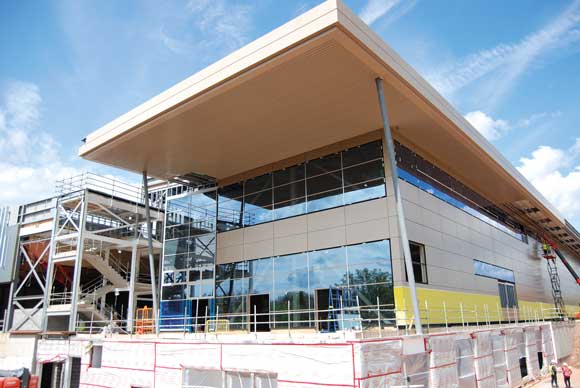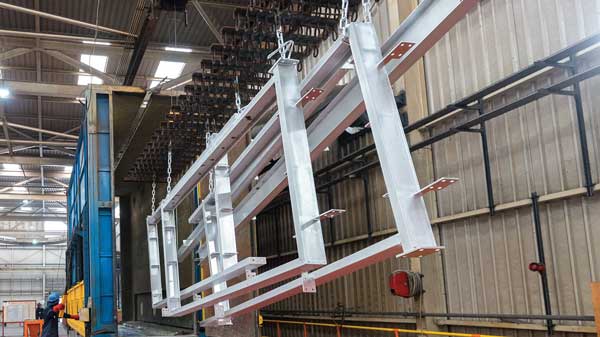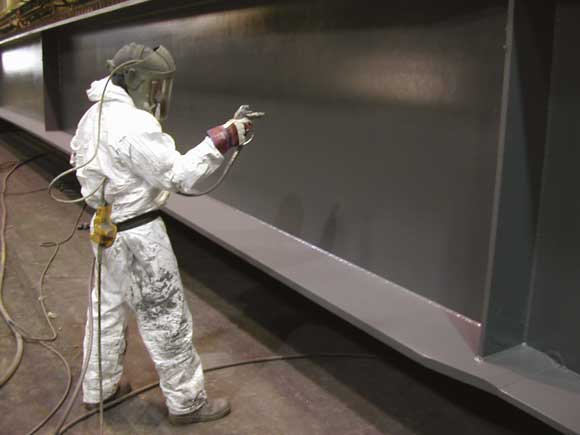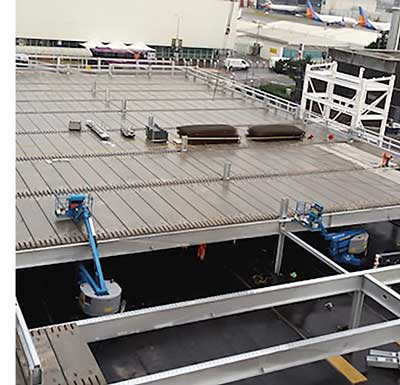Projects and Features
Supporting sustainable steel construction
Andy Harrison, Director of Sales & Marketing at Wedge Group Galvanizing, one of the UK’s largest hot-dip galvanizers, explores the key benefits galvanizing brings to sustainable steel construction.
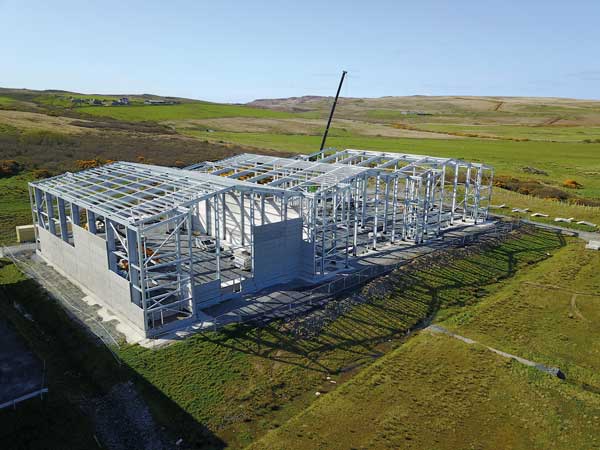
The growing focus on the climate emergency is causing the construction sector to re-examine how the built environment is designed, constructed and maintained. The efficient use of resources with minimal waste and maximising the useful life of buildings are key elements of the way forward, as are circular economy principles.
Steel solutions offer many advantages when it comes to sustainable construction as it is a strong, durable, versatile material that provides structural framing systems that are lightweight, flexible, and adaptable as well as reusable. However, to achieve that durability in atmospheric environments the steelwork must be protected against corrosion.
Hot-dip galvanizing provides a highly effective, durable and sustainable corrosion protection system wherever steel is in use, from the structural steelwork for major building projects, right through to final flourishes such as gates and railings. Hot-dip galvanizing is part of the solution in the drive to net-zero carbon by 2050.
Hot-dip galvanizing is a process that involves immersing the steel component to be coated in a bath of molten zinc (at about 450°C) after pickling and fluxing, until the temperature of the steel component is the same as the zinc, and then withdrawing it. During this process, a series of zinc-iron alloy layers are formed by a metallurgical reaction between the iron and the zinc. As the steel component is removed from the zinc, the zinc on its surface will begin to solidify. As this happens, excess zinc is removed to ensure a smooth finish.
Resource efficiency is at the heart of the process with minimal waste. Both the zinc ash produced from surface oxidation in the galvanizing bath and the ‘dross’ – a mixture of zinc and iron that accumulates at the bottom of the bath – are fully recovered and are often used in the same galvanizing process or sold to make zinc dust and compounds for a variety of applications such as rubber additives, cosmetics and electronic components.
The resulting coating is durable, tough, abrasion resistant, and provides cathodic (sacrificial) protection to any small, damaged areas where the steel substrate is exposed. The typical minimum average coating thickness for structural steelwork is 85μm which, depending on the environment, can provide up to 170 years of protection with no future maintenance, in contrast to other corrosion protection systems.
Galvanized steel also contributes to the circular economy at end of life. Whether it’s re-galvanizing, removal or reuse, galvanized steel is easily recycled and can also be recycled with scrap steel.
As an industry, the hot-dip galvanizing sector has taken significant steps in recent years to reduce its overall environmental impact. A number of leading organisations, such as Wedge Group Galvanizing, are leading the way by introducing highly innovative concepts designed to reduce waste, promote better use of resources and improve energy efficiency across galvanizing plants by reusing ‘waste’ heat created from the furnaces used in the galvanizing process.
One of the most effective of these techniques is rainwater harvesting, which reduces the amount of mains water used in the pre-treatment lines. This multi-stage initial cleaning and rinsing process is integral to the galvanizing process as it removes all grease, scale, dirt and rust, utilising various diluted alkaline and acidic solutions.
This ensures that the steel is in an ideal condition to react with the molten zinc, when finally it is immersed in water to cool. To fulfil the cooling process while reducing demand on the mains water supply, rainwater that falls onto the roofs of plants is being accumulated and stored on-site via a series of gutters and tanks, and then recycled back into the galvanizing process.
With its long life, resource efficiency, minimal waste and its inherent capability for reuse and recycling, hot-dip galvanizing is becoming widely known as one of the most environmentally-friendly forms of corrosion protection available to the steel construction industry, and with the ongoing efforts being made across the sector to ensure that these qualities are continually enhanced, it’s clear that hot-dip galvanizing is part of the solution for sustainable steel construction.
Wedge Group Galvanizing Ltd
is a gold sponsor of Steel for Life










